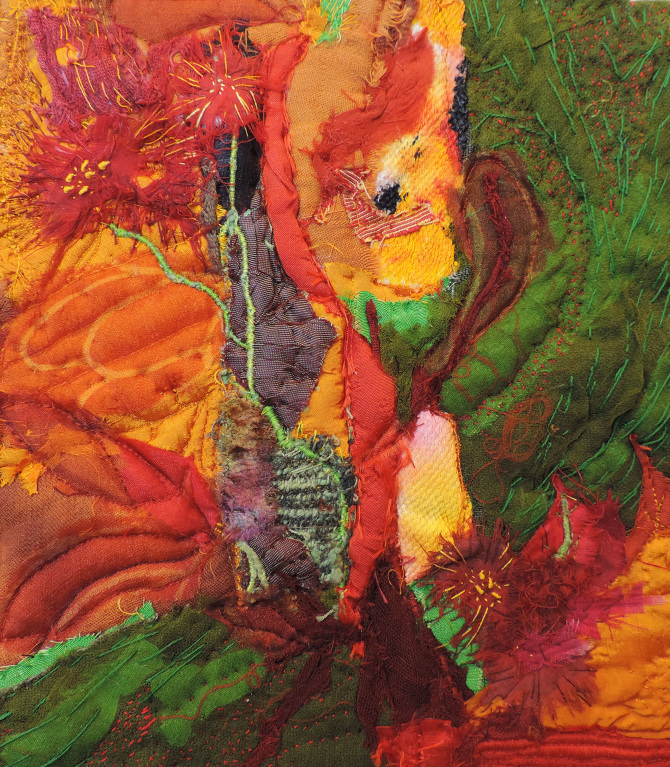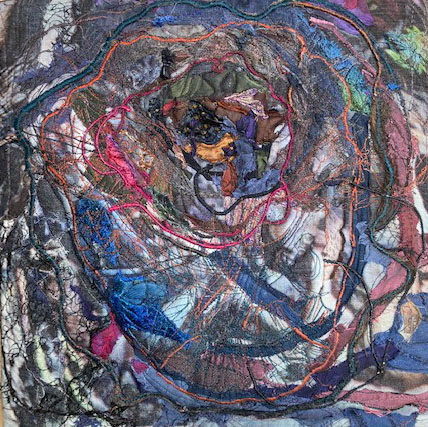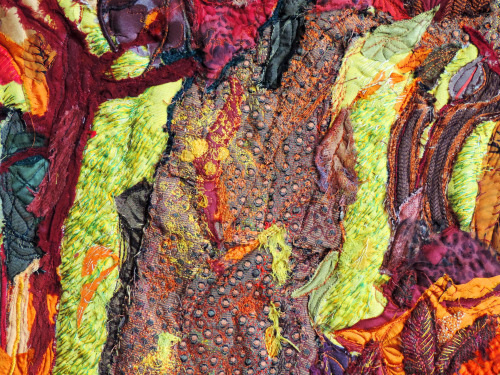Diane Hall has been a tutor at Attenborough Arts Centre since our opening, leading workshops such as Problem and Criticism, which helps artists at all stages of their creative career to develop their critical voice, reflect and expand their creative horizons. To help celebrate our tutors we found out a little more about Hall, what inspires her to be creative as well as diving deep into her methods of making.
How would you describe your artistic practice?
Art is central to my life. My research and practice concerns conservation and the associated political issues of the natural environment. It is the fragile relationship between the industrial and natural landscape that fascinates and stimulates my work.
We really enjoy the beautiful tactility to your works, the way they explore surface, texture and space. Where does this aspect of your practice come from?
I had a childhood where I was encouraged to explore and collect sticks, feathers, stones, leaves and many more objects from outdoors and would create sculptural objects using them. I was also fascinated watching my grandmother taking an adult coat, turning it inside out and making a child’s garment from it. The fluidity, pliability and tactile nature of different fabrics intrigued me, as were the ways of joining with buttons, clasps, ties, and stitch.

Caption: A vibrant mosaic of material coming together within one of Hall’s textile drawings created during the pandemic.
To what extent is place important to the work you create?
My approach leads me to seek the incredible layering of memories and experiences that make up an environment. An example of this was when I visited an old open cast mining site. I got to see core samples extracted, and was fascinated by the negative spaces of the void left in the ground as a result. Even the sight of a tree stump makes you wonder about the lost history of the tree within the space.
How did you get into the arts?
I have always done art. After art school, I taught adult art classes, organised art projects with Leicester’s Youth Service and studied an Art & Education degree. It wasn’t until I took the Advanced Studio Course at the Newly established Attenborough Arts Centre that my art practice took off.
How would you describe your creative working space?
It’s a converted attic in an old cottage in Rutland, opposite a farm which allows for reflective, developmental time in the countryside.
Sustainability feels like an integral part to your practice, how can artists ensure that their practice is environmentally sustainable?
It can be very challenging but I try to consider the environment in all aspects of my practice. When painting, I try to make sure I take out as much as I am going to use and collect excess in small jars so that it can be used later. With textile work I always use up-cycled fabrics. I love going to exhibitions but try to consider the way I travel to them.

Caption: Within her Tree Trunk series of artworks we see Hall has stitched together a mix of fabric and thread in similar patterns to a tree trunk cross-section.
Why is sharing your passion for arts important to you?
I want others to feel as lucky as me. Having art in my life and being visually aware is so enriching and interesting, providing endless opportunities for dialogue and discussion. Ideas constantly present themselves, providing challenges and thoughts for creative expression.
Who are your biggest artistic influences, how do they inspire what you create?
Robert Smithson’s photographs of found Industrial Monuments are an inspiration. The images record a disused industrial site near New York which fed my thoughts and research concerning the industrial pollution of the natural environment. Alison Turnbull is a name that comes to mind for her use of grids and repetition. The process of working in series and segments is a fundamental aspect of my own work.
How do you like to use your sketchbook? How does ‘sketchbooking’ influence your larger artworks?
Each sketch book is labelled, dated and identified for a piece of work. They are used to develop ideas and research. I create mind maps, draw, stick cuttings from articles, use mixed media to consider alternate compositions, and play with details. I also find them useful for recording and evaluating final works and noting further ideas for development.
Lastly, where can we find your work?
You can find more of my work over on my website: dianeehall.co.uk
